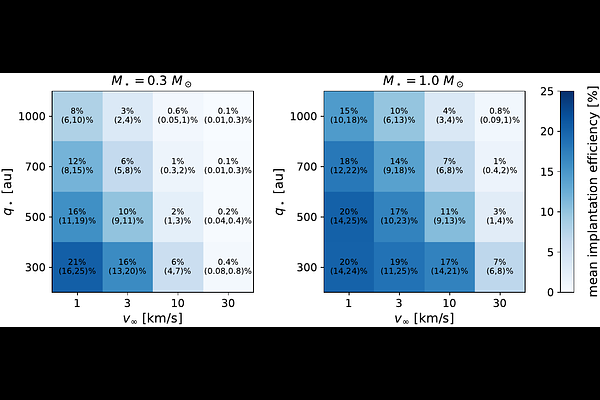Early Stellar Flybys are Unlikely: Improved Constraints from Sednoids and Large-$q$ TNOs

Early Stellar Flybys are Unlikely: Improved Constraints from Sednoids and Large-$q$ TNOs
Qingru Hu, Yukun Huang, Brett Gladman, Wei Zhu
AbstractSedna-like objects (a.k.a. sednoids) are transneptunian objects (TNOs) characterized by large semimajor axes and exceptionally high perihelia. Their high-$q$ orbits are detached from the influence of the four giant planets and need extra perturbation to form. One hypothesis posits that close stellar flybys could have perturbed objects from the primordial scattering disk, generating the sednoid population. In this study, we run N-body simulations with different stellar encounter configurations to explore whether such a close stellar flyby can satisfy new constraints identified from sednoid (and detached extreme TNO) observation, including the low-inclination ($i<30^\circ$) profile and primordial orbital alignment. Our results suggest that flybys with field stars are unable to generate a sufficient population, whereas flybys within the birth cluster fail to produce the primordial orbital alignment. To meet the inclination constraint of detached extreme TNOs, flybys have to be either coplanar ($i_\star \sim 0^\circ$) or symmetric about the ecliptic plane ($\omega_\star \sim 0^\circ, i_\star \sim 90^\circ$). After taking into account their occurrence rate at the early stage of the Solar System, we conclude that close-in stellar flybys ($q_\star \le 1000$~au) that satisfy all constraints are unlikely to happen ($\lesssim$5\%). Future discoveries of additional sednoids with precise orbital determinations are crucial to confirm the existence of the low-inclination tendency and the primordial alignment, and to further constrain the early dynamical evolution of the Solar System.